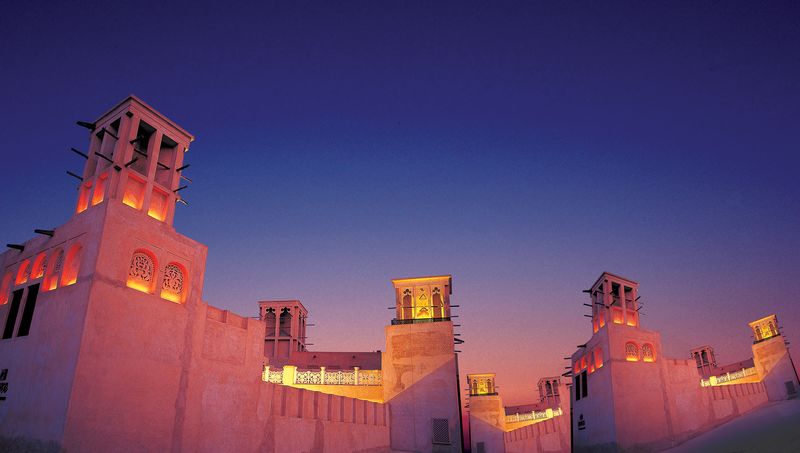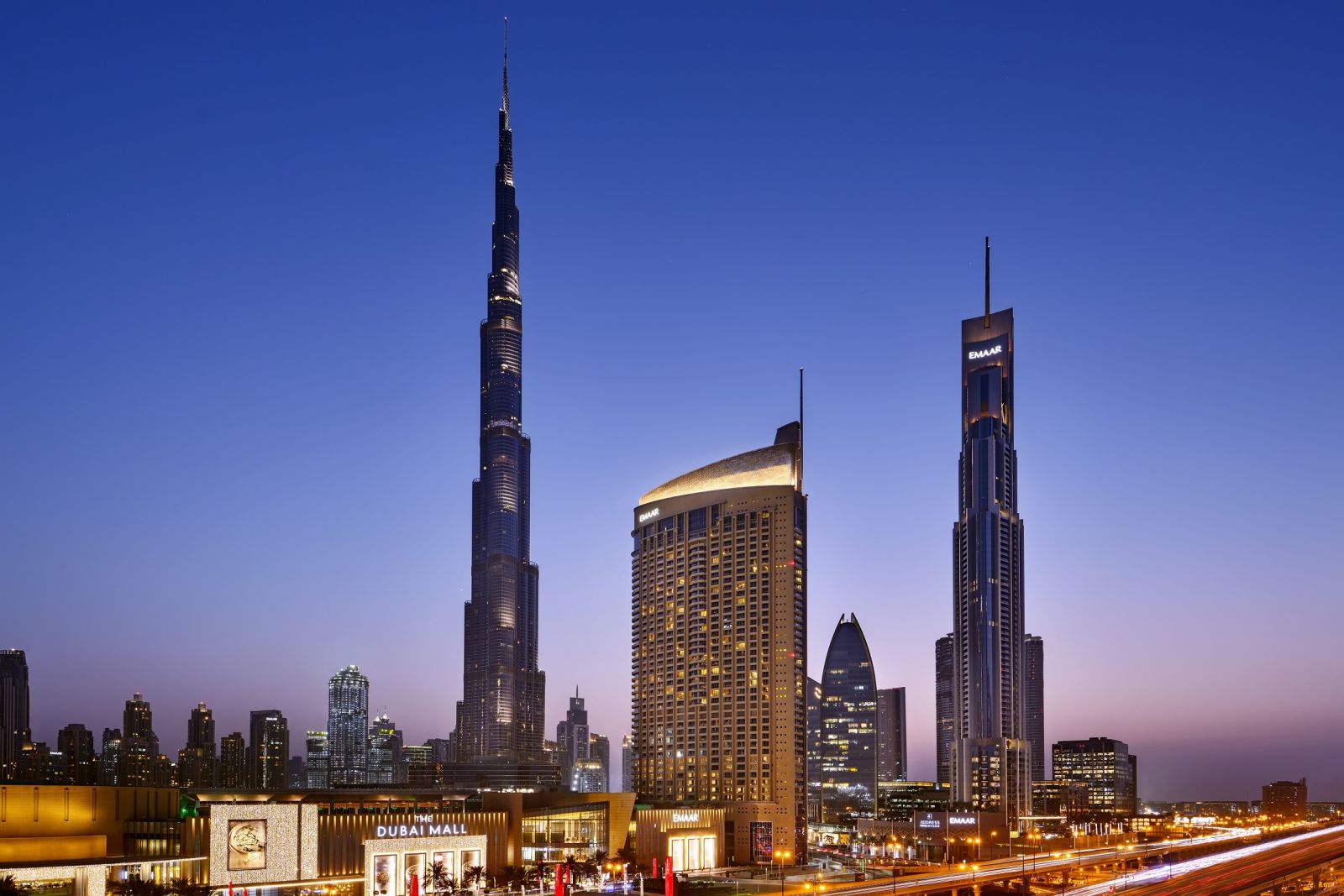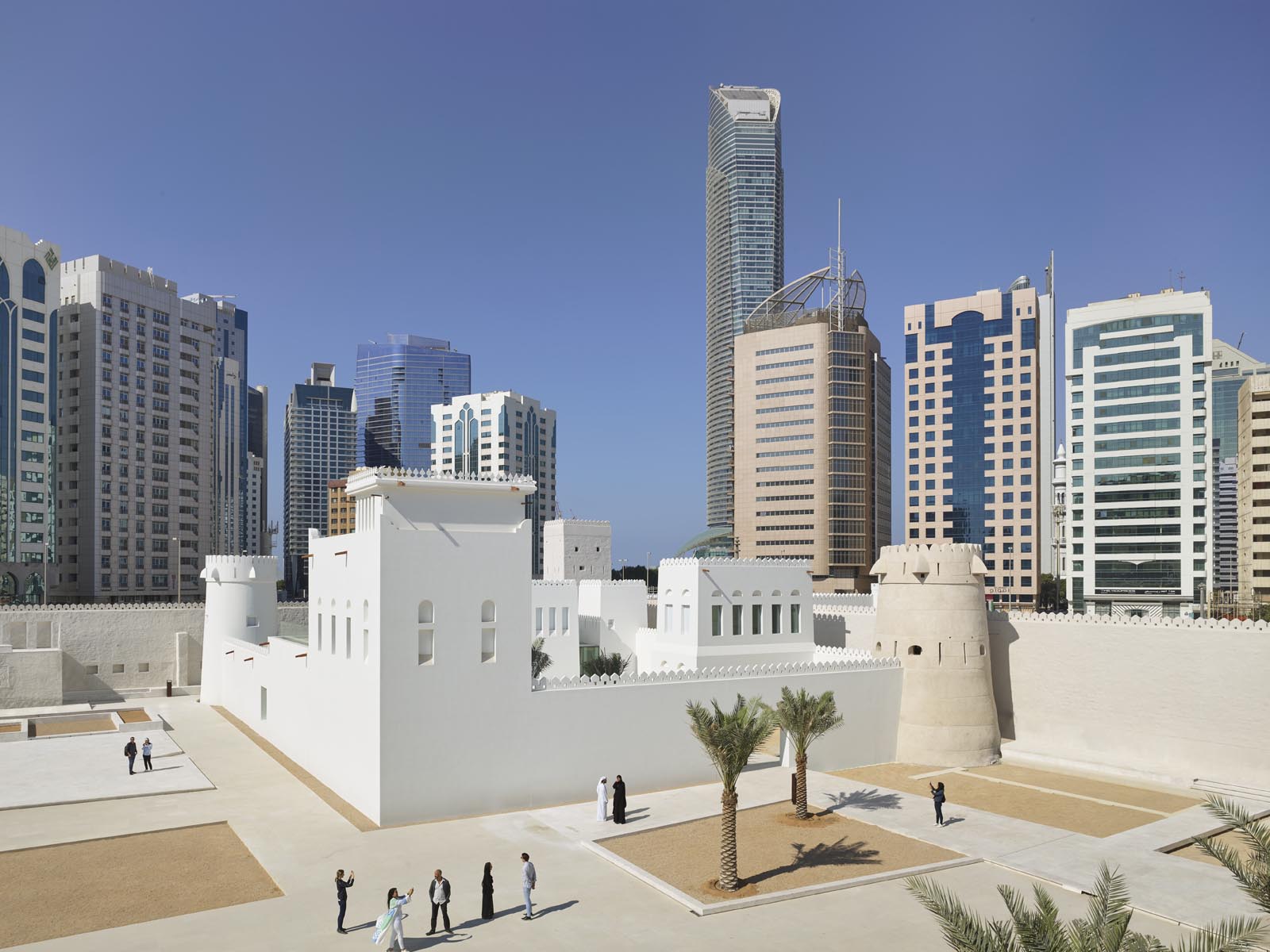Places of interest in the UAE
Each of the Emirates offers a great exotic spectacle for our fellow Emiratis, whether it is the landscape or the contemporary super modern architecture, historical buildings and Arabic cultural sites. For inspiration, here are some tips for trips to see the most famous modern buildings and historical sites in the Emirates that are worth a visit.
Historic Dubai
When in Dubai, you certainly won't spend all your time just relaxing on the perfect beaches. What Dubai has to offer won't leave you in peace. The UAE's magnificent buildings and modern architecture projects are unparalleled in the world. Behind the incredible design of hotels and glittering shopping malls there is a huge investment. Only in a few places will you find the original oriental atmosphere in the Bastakiya and Deira districts or Bur Dubai, where the marketplaces smell of spices and the bustle of commerce reigns. The historic Bastakiya district has largely been spared the new construction that began in the 1970s. The adobe houses with traditional wind towers that functioned as air-conditioning have been preserved. Persian immigrants lived here and the neighbourhood was named after their home. Today, the ground floors of these historic buildings dating from 1902 house small shops selling traditional Arabic goods.
A semblance of life before the oil boom, the tradition of pearl hunting, arts and crafts workshops and products, draw tourists to the Heritage and Diving Village in the UAE. The Jumeirah Archaeological Site, a complex of archaeological sites, preserves the foundation walls of a 10th-century caravanserai, residential complex and mosque, rebuilt in the 18th century. The symbol of the Jumeirah district is, of course, the mosque of the same name. You can learn more about the history, traditional life and culture at the Dubai Museum, housed in a historic 19th-century fortress. Find out more about the history and traditional ways of making jewellery at the Gold and Diamond Park Museum, another interesting museum that displays Arab and Indian jewellery.
Dubai's modern symbols
Dubai's modern symbols include the world's tallest skyscraper, the Burj Khalifa (formerly the Burj Dubai - 828m), the 321m high hotel resembling a sailing ship, the Burj Al-Arab, and the world's tallest seven-star hotel. It is called the Arab Tower and is a modern symbol of Dubai. The building sits on a man-made island whose concrete foundations extend up to 45 metres below the seabed. Luxurious materials were used for the expensive interior, with no expense spared in gold, granite or marble. Investors say that even the high prices for accommodation will not bring any profits in 50 years of operation, even if the hotel is fully occupied all the time. Only the truly rich can afford this luxury. The "city within a city" of Medinat Jumeirah in Dubai will immerse you in its fairy-tale atmosphere of a thousand and one nights, thanks to its lavish hotels and villas in the style of old Arabian palaces.
For evening strolls and catching up with friends, the Dubai Creek promenade, along the sea bay that extends into the centre of Dubai, is perfect. Ancient Arabian sailing ships, crates of goods stacked on the shore and sailors playing cards will remind you of pirate days gone by. If you don't feel like walking, take advantage of the water taxi abras or the traditional low boats with seating for up to 20 passengers. At the mouth of Dubai Creek stands a tall palace originally built of clay, now altered by renovations, commissioned by the grandfather of the current monarch, founder of a merchant dynasty.
Sharjah
The emirate of Sharjah is also trying to promote tourism through various projects, such as the establishment of a large fishing centre in Khalid Bay. Other attractions are the reasonable prices, comfortable accommodation and, of course, the historic core of the city and its modern face. A relaxing oasis when visiting the city is the largest square, Rolla Square, named after the Rolla Tree art sculpture. It is lined with stone columns of Indian origin.
Some of the city's notable landmarks include the Heritage area, an old part of the city that is reminiscent of days gone by thanks to the impeccable reconstruction of merchant and residential houses. Some of the buildings serve as museums. Other traditional houses made of clay and limestone from the coral reefs, or watch and wind towers can be found in the Al-Khan area, a former fishing village.
Ittihad Square is dominated by the monumental golden dome of an ornate mosque. There are also two tall minarets, or the Monument of Unification with its seven shells that symbolise the UAE. The Sharjah Art Museum houses a collection of Arab art, including works by Arab painters and a collection of art by the royal family. Various archaeological finds from across the Emirates are housed in the magnificent palace of the Archaeological Museum, built in 1992. Another, much older palace, which is around 200 years old, houses traditional religious objects of Islam, old manuscripts and volumes of the Quran, and other antiquities.
Families with children will be interested in the Sharjah Science Museum, which has 5 exhibition halls with special sections for children. Of great interest are dinosaur fossils, fossils of prehistoric marine animals, or a real space meteorite.
From the Emirate of Sharjah, you can also travel to neighbouring Emirates for history and sightseeing.
Ajman, Ras Al Khaimah
In the Emirate of Ajman, for example, there is a historic fortress dating from 1775, which houses a museum of Islamic traditions and crafts. Fujairah, the capital of the emirate of the same name, also has an interesting historical centre. New buildings include the magnificent Emir's Palace on the western outskirts of the city. The most fertile emirate, Ras Al-Khaimah, will interest history buffs with the archaeological excavations of the Julfar settlement, on the northern outskirts of Ras Al-Khaimah. In the same city you can see the historic Al-Fulayyah Fortress with its adjacent mosque, or the collection of the National Museum of Ras Al Khaimah. For a taste of traditional pottery, head to the pottery village of Wadi Haqil, 6km away, near which is another abandoned settlement, Al-Halla, with its 16th-century walls.The dazzling metropolis of the Emirate of Abu Dhabi, with its mosques, skyscrapers and other hyper-modern buildings with neo-Islamic elements, will leave the Western tourist in awe. Remnants of historical times are still preserved in Al-Bateen Bay, even though modern construction has already taken hold here. The romantic sight of the four preserved mosques standing on the shores of the bay, where Arab wooden boats are moored, some of which will remain until their destruction.
Abu Dhabi
Traditional crafts and arts from the territory of the Emirate of Abu Dhabi are presented in the Heritage Village. Woodwork, leather, silver daggers, copper objects, the old ways of UAE settlement and life, you will learn a lot of interesting things about all of these here. There are also animals, camel rides, and a museum with historical photographs and objects.
The 18th century Al-Hosn Fort was reconstructed in the 1980s. The fort is also called White Fort because of its white colour. It is surrounded by a beautiful park, which also houses the New Islamic Modern Cultural Centre.
The emirate certainly doesn't want to be left behind Dubai, and no expense has been spared in the construction of the imposing, 800-metre-long Emirates Palaces with more than 100 domes, a huge park and its own beach. The largest of the domes has a diameter of 42 metres. There is a hotel, a convention centre, marble halls with golden ceilings, shops, restaurants, cafes, bars and two large swimming pools.












